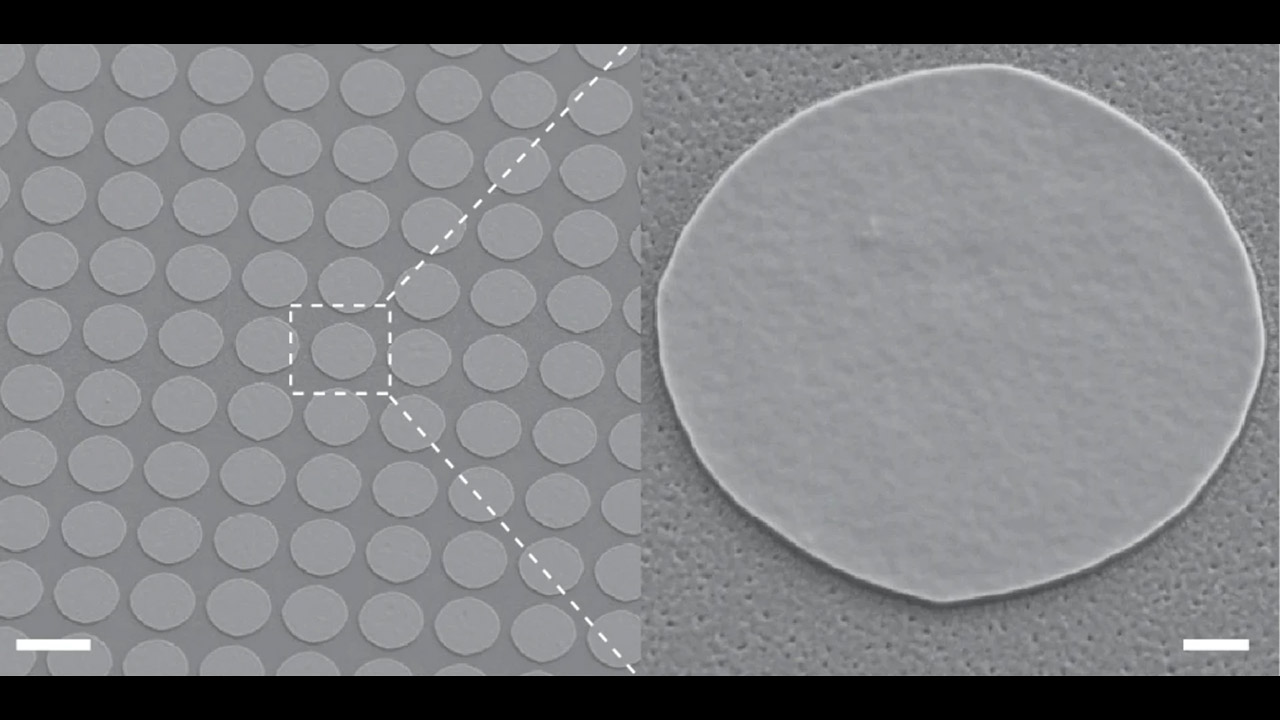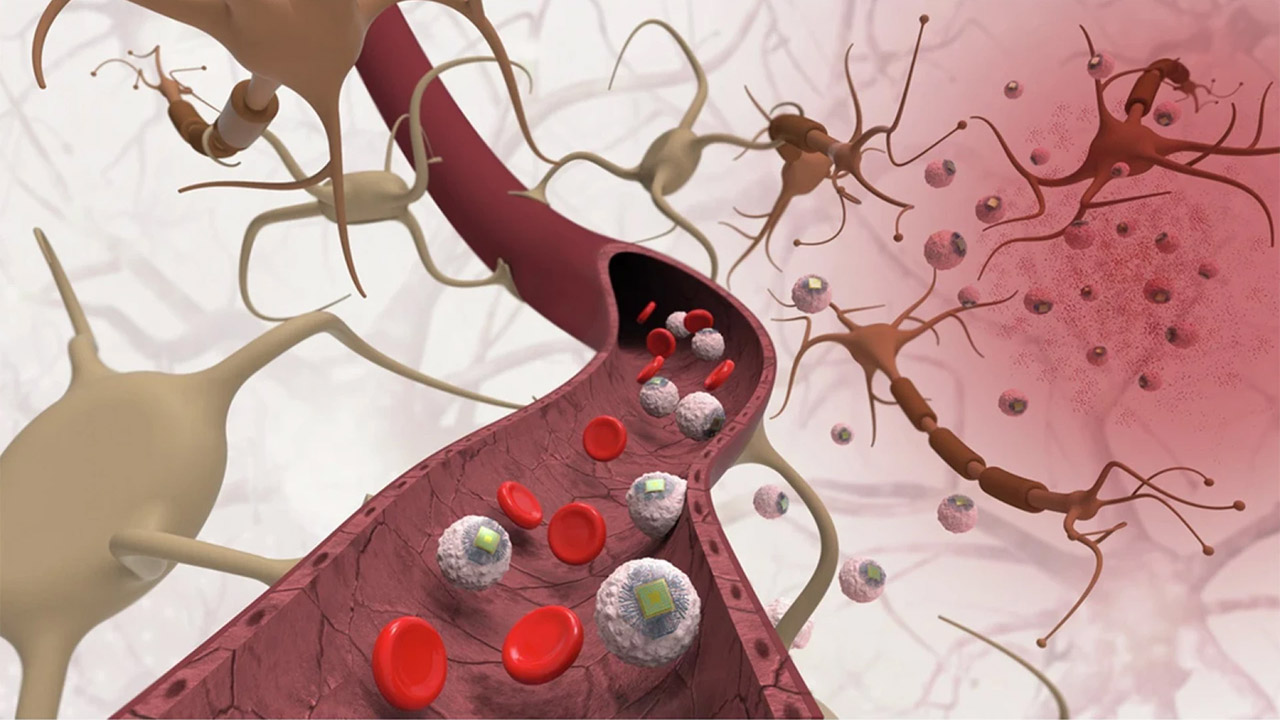
Photo credit: MIT
MIT just changed the game for brain disorders, and the project is called Circulatronics Researchers there created devices so small they can fit on a blood cell, injected them with a simple arm shot and let the body transport them to the brain. Best of all, there are no drills, scalpels or week long hospital stays, required.
These chips are about one-billionth the size of a grain of rice. Engineers stack ultra-thin layers of organic semiconductors between metal films to create working circuits. Once finished the chips pop off the silicon wafer and float in liquid ready for the next step. That next step is living immune cells called monocytes. Scientists bond each chip to one of these cells turning them into hybrids that look biological to the body’s defenses. Monocytes already know how to slip past the blood brain barrier—a wall that stops almost everything else—and they head towards inflammation like guided missiles. Many brain diseases from Alzheimer’s to tumors create exactly that kind of inflamed hotspot. The hybrids follow the signal, cross the barrier unharmed and park themselves at the trouble spot.
- Transform your reality and do everything you love in totally new ways. Now you can get exclusive in-game Gorilla Tag items and 1000 shiny rocks when...
- NO WIRES, MORE FUN — Break free from cords. Game, play, exercise and explore immersive worlds — untethered and without limits.
- 2X GRAPHICAL PROCESSING POWER — Enjoy lightning-fast load times and next-gen graphics for smooth gaming powered by the SnapdragonTM XR2 Gen 2...
Seventy-two hours after injection into mice, researchers opened the brains and found clusters of chips exactly where they created tiny inflamed zones. No random wandering, no pileups in the liver or lungs—just precision delivery deep in the skull. Power comes from outside the body. A near-infrared laser aimed at the head sends light through skin and bone. The chips convert that light into electricity on the spot and generate enough juice to fire tiny electrical pulses into surrounding neurons. In the mouse tests those pulses lit up a marker called c-Fos in brain cells proving the stimulation hit a bullseye within 30 micrometers of the target. For scale, a human hair is about 70 micrometers wide.

Traditional deep brain stimulation requires surgeons to thread wires through the skull and plant electrodes by hand. Infections happen, scars form, and the bill can climb beyond hundreds of thousands of dollars. Circulatronics skips all of that. The patient gets an injection, waits a few days and then sits under a light for treatment sessions. Costs plummet, risks disappear and clinics in remote areas suddenly have access to cutting edge therapy.
Deblina Sarkar has been working on this for six years. Her lab solved the chip dying the moment they left the silicon, gluing electronics to living cells without killing either side and making wireless power efficient enough to work centimeters deep in tissue.

The mice showed no damage to healthy brain tissue. Neurons fired normally around the chips, and the blood brain barrier stayed sealed. That’s safety data that gets attention in the medical world because anything that breaches that barrier usually means disaster. Future versions could do more than stimulate. Add a sensor and the chip reports back on local chemistry. Add memory and logic and it adjusts the pulses automatically when it detects trouble. Sarkar’s team is already talking about synthetic electronic neurons – replacements for cells lost to injury or disease.
Brain cancer is high on the list. Glioblastoma has tumors too small for surgeons to chase and the deadly pediatric cancer diffuse intrinsic pontine glioma grows in places where knives can’t reach. A swarm of self-guided chips could surround every tumor and zap it silently. Chronic pain, multiple sclerosis, depression and Parkinson’s respond to electrical nudges. If Circulatronics scales up millions of patients who currently wait years for an operating room slot could start treatment weeks after diagnosis.
[Source]













